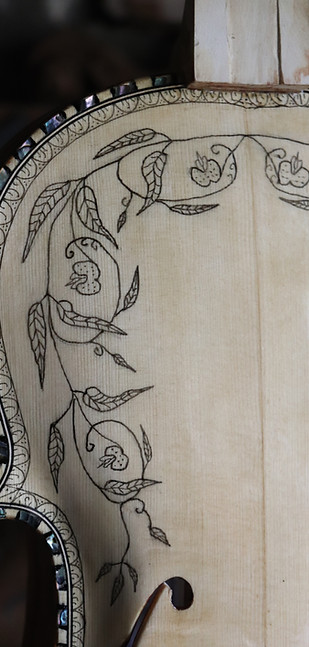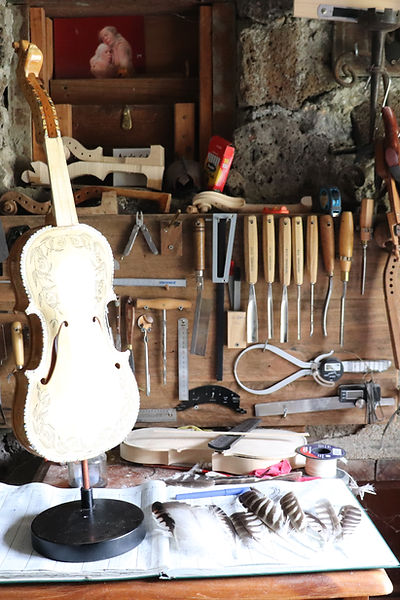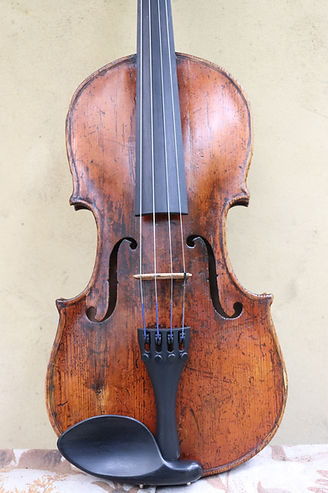
Lutherie
Hardanger Fiddles
My interest in violin making began many years ago in the early 1990s whilst restoring countless 'junk' fiddles purchased at antique stores and second hand sales. My skill set has grown over the years, and with the help and advice of experienced makers, I now pride myself in the quality of the work I am producing. Many of my past instruments have been 'hybrids' somewhere between a violin and a Hardanger Fiddle - with the scale of a violin and the sympathetic strings of a Hardanger Fiddle. These days my preference is for fully traditional Hardanger Fiddles, which is reflected in my current project. I aim to produce 1-2 fiddles per year as fiddle making needs to be fitted around my other creative and musical activities, as well as family and work commitments.
Buying Martin's Fiddles
As mentioned above, my current output is around 1-2 fiddles per year. I do not take deposits and don't accept orders for fiddles as such. However, if you are interested in purchasing one of my instruments I can add you to my waiting list. When you are at the top of the list you get first option to buy any fiddle I complete. These instruments are unique and what one person loves another will not. Additionally, my work as a luthier is carried out as a passionate creative exercise and for the satisfaction of producing an instrument that looks and sounds beautiful. It is hardly a commercial enterprise!

What the Heck is a Hardanger Fiddle Anyway?
A Hardanger fiddle (Norwegian: hardingfele) is a traditional member of the violin family considered to be the national instrument of Norway. In total, the Hardanger can have eight or nine strings (rather than four as on a standard violin) The F-holes of the Hardanger fiddle are different to a standard violin and are carved in rather than cut through a flatter top. Four of the strings are strung and played like a violin, while the understrings or sympathetic strings, resonate under the influence of the top ones. These extra strings are tuned and secured with extra pegs at the top of the scroll, which is longer to accommodate the extra pegs. Traditionally the Hardanger Fiddle is tuned one tone higher than a standard violin, but tuning varies greatly depending on tradition, player preference and the actual voice of the instrument. Traditionally Hardangers are also highly decorated.
Past and Current Fiddles

8 String violin scale Hardanger Fiddle

8 String violin scale Hardanger Fiddle #2

2021-23 Project. Fully traditional Hardanger with my own 'Hardenbergia' rosings

This fiddle has a copy of a Magnus Dagestad scroll design. He was a Norwegian carver in the early 1900s that also made fiddles.

_JPG.jpg)


Fully Traditional Hardanger Fiddle completed in May 2023. 'Hardenbergia' rosings. Green Abalone inlays. 'Perfection' planetary geared pegs.


A very old violin (circa 1790's) restored by me recently. This instrument had its first rebuild in the early 1900s by violin maker Charles Darley Hume (1865-1949). Imagine the stories it could tell!


A part of the restoration involved replacing very damaged sections on the edge of the Spruce top and then touching it up to match the patina on the rest of the instrument.

The finished Fiddle. Not too bad for about 220 + years old!!
"Art enables us to find ourselves and lose ourselves at the same time."
Thomas Merton
